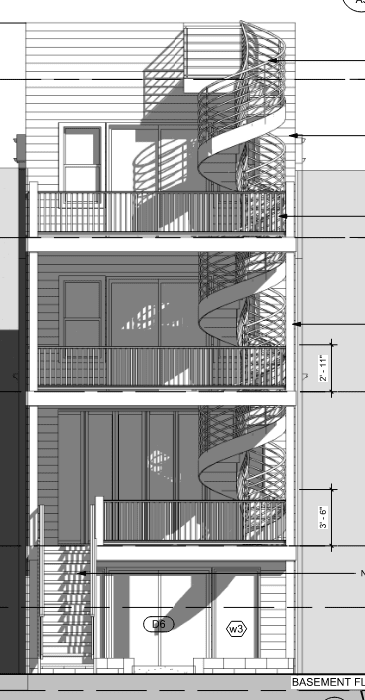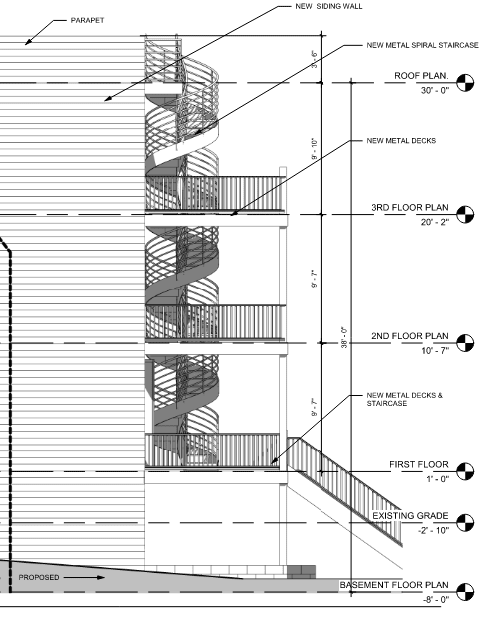SleeplessEngineer
Structural
- Jul 12, 2020
- 46
Hi everyone!
I am very new to wood building design. I was asked to support this pre-engineered steel stair (shown below) on LVL beams. To me, it sound like a dump idea I would rathe run steel WF beams below the stair post to support it; but I was told this has been on many projects and this is norm. The detailing involves in steel bent plate on top of LVL and bolt through side ways. The stair post is welded to the bent plate.
[highlight #FCE94F][/highlight]I feel mostly the LVL (sized accordingly) can be sufficient to support load, but I'm just uncomfortable supporting this way. Perhaps because, I feel wood is not ductile, different flexural stiffness and so not compatible. Is this really common and I 'm just being irrational?


Thank you for reading my post! I appreciate your time.
I am very new to wood building design. I was asked to support this pre-engineered steel stair (shown below) on LVL beams. To me, it sound like a dump idea I would rathe run steel WF beams below the stair post to support it; but I was told this has been on many projects and this is norm. The detailing involves in steel bent plate on top of LVL and bolt through side ways. The stair post is welded to the bent plate.
[highlight #FCE94F][/highlight]I feel mostly the LVL (sized accordingly) can be sufficient to support load, but I'm just uncomfortable supporting this way. Perhaps because, I feel wood is not ductile, different flexural stiffness and so not compatible. Is this really common and I 'm just being irrational?


Thank you for reading my post! I appreciate your time.
